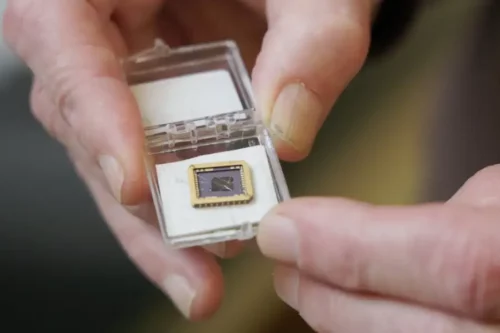The Georgia Tech team’s graphene transistor marks a leap in computing, challenging silicon’s dominance with conductivity and scalability.

Graphene, a single layer of carbon atoms, combines strength, excellent electrical conductivity, and resistance to heat and acids. Until now, creating a controllable graphene semiconductor, essential for computer logic chips, has been elusive.
The issue with previous technologies stemmed from the absence of a bandgap. In semiconductors, bands with varying energy levels exist; a crucial point, known as the bandgap, is where electrons can jump from one band to another. This bandgap is essential for enabling the control of electrical current, allowing it to be either conducting or non-conducting. This mechanism forms the foundation of the binary system of zeroes and ones, which is pivotal in the functioning of digital computers.
Researchers at Georgia Tech in Atlanta have made a significant breakthrough in graphene technology by developing a graphene-based transistor that functions as an on/off switch for electrical current. This advancement is notable for its potential scalability, using techniques similar to silicon chip production.
The team utilized silicon carbide wafers, which, when heated, left a graphene layer after the silicon evaporated. Although de Heer was not available for comment, he highlighted in a statement that graphene semiconductors exhibit superior electrical properties compared to silicon chips, likening it to the difference between a gravel road and a freeway.
Silicon chips, while inexpensive and widely supported by global manufacturing, are nearing their performance limits. Moore’s law predicts that the doubling of transistors in a circuit slows down approximately every two years due to challenges in controlling electrons at extreme circuit densities. Graphene circuits, therefore, present an opportunity to advance technological progress, though challenges remain.
David Carey from the University of Surrey, UK, recognizes the significance of using wafers for scalability, aligning with existing semiconductor industry technology. However, he expresses caution about a rapid transition from silicon to graphene chips. This caution stems from the need for further refinement in graphene technology, particularly in transistor size, quality, manufacturing methods, and the substantial lead silicon technology currently holds.






